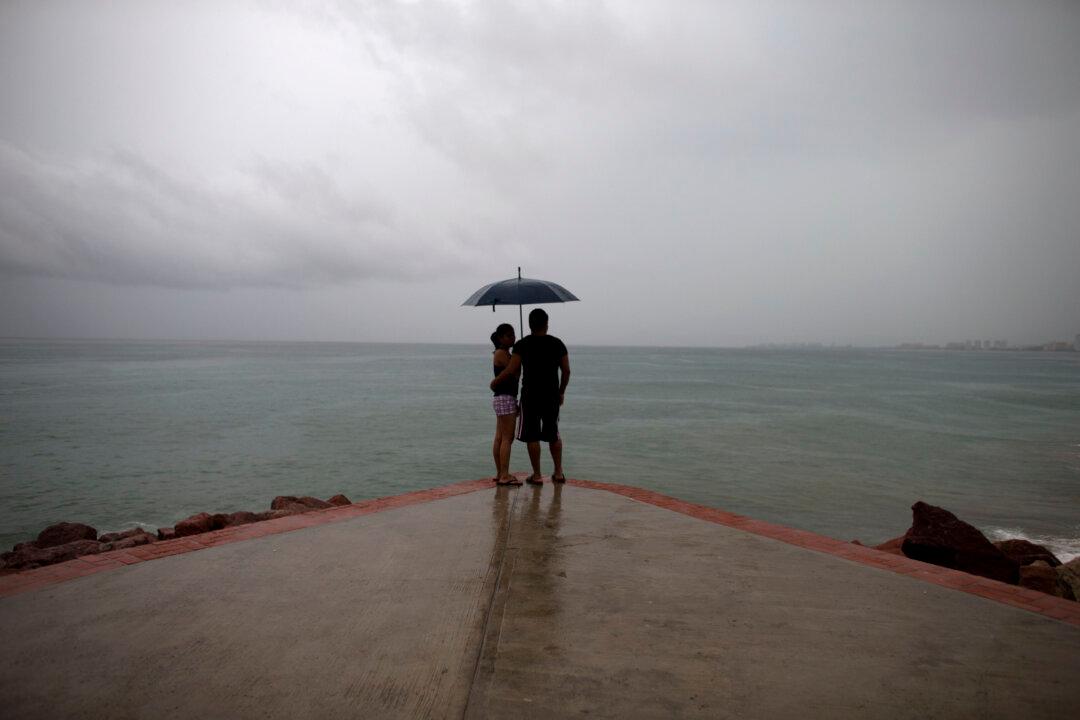PUERTO VALLARTA, Mexico—Record-breaking Hurricane Patricia appeared to leave remarkably little damage as it moved rapidly inland over mountainous western Mexico early Saturday and weakened to tropical depression status, though authorities warned it could still cause deadly floods and mudslides.
Patricia, which peaked as the strongest hurricane on record in the Western Hemisphere, made landfall Friday on a sparsely populated stretch of Mexico’s Pacific coast as a Category 5 storm, avoiding direct hits on the resort city of Puerto Vallarta and major port city of Manzanillo.
There were reports of some flooding and landslides, but no word of fatalities or major damage as the storm pushed across inland mountains while bypassing the metropolis of Guadalajara overnight.
Residents of the coast where Patricia came ashore last night described an enraged sea that crashed into hotels, scooping beach away from their foundations, and howling winds that toppled trees and telephone posts.
“The waves were coming into the hotel,” said Domingo Hernandez, a watchman at the Hotel Barra de Navidad in the resort village of the same name in Jalisco state.
“All the streets here in town are full of downed trees all over the place,” said Hernandez, who described Patricia as the strongest storm he’s seen in a quarter century of living on the coast. “You have to make your way around all the downed telephone poles, the power lines, the trees.”
Puerto Vallarta heaved a collective sigh of relief Saturday morning to find itself largely unscathed.
People snapped selfies next to a sculpture overlooking the sea and business owners swept sidewalks as they would on any morning. There were puddles downtown, but nothing more than a passing thunderstorm might leave.
Maximiliano Macedo of Puerto Vallarta strolled arm in arm with his wife down the waterfront to see things by the light of day.
“Fortunately, nothing happened here,” Macedo said. “Like everybody else, our family we got prepared,” Macedo said; the family stockpiled supplies, taped the windows and readied the radio. But he said when Patricia made landfall south after 6 p.m., they began to relax.
President Enrique Pena Nieto issued a taped address late Friday, noting that while initial reports indicate damage has been less than those expected, “We cannot yet let our guard down.”
The U.S. National Hurricane Center said Patricia had weakened to a tropical depression by midday Saturday with maximum sustained winds of 35 mph (55 kph). Remnants of the storm were expected to feed existing rainstorms hitting southern Texas.
Patricia was centered about 95 miles (155 kilometers) northeast of Zacatecas and it was moving to the northeast at 24 mph (39 kph)
Tourist Brandie Galle of Grants Pass, Oregon, said she had been sheltered with other guests in a ballroom with boarded-up windows at the Hard Rock Hotel in Puerto Vallarta. When the city was not feeling any major effects from the storm two hours after landfall, workers let them out to eat at a hotel restaurant.






